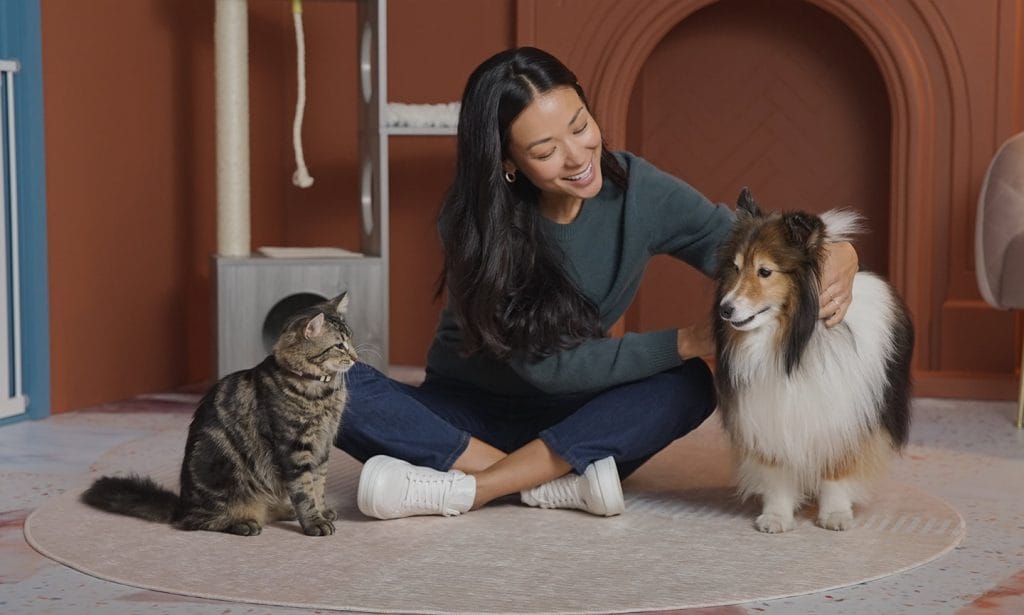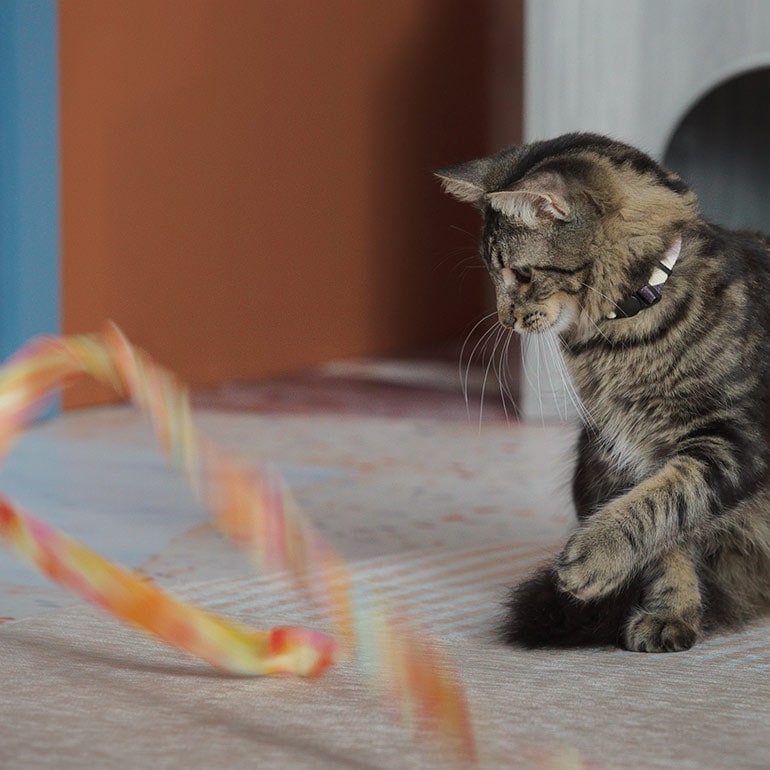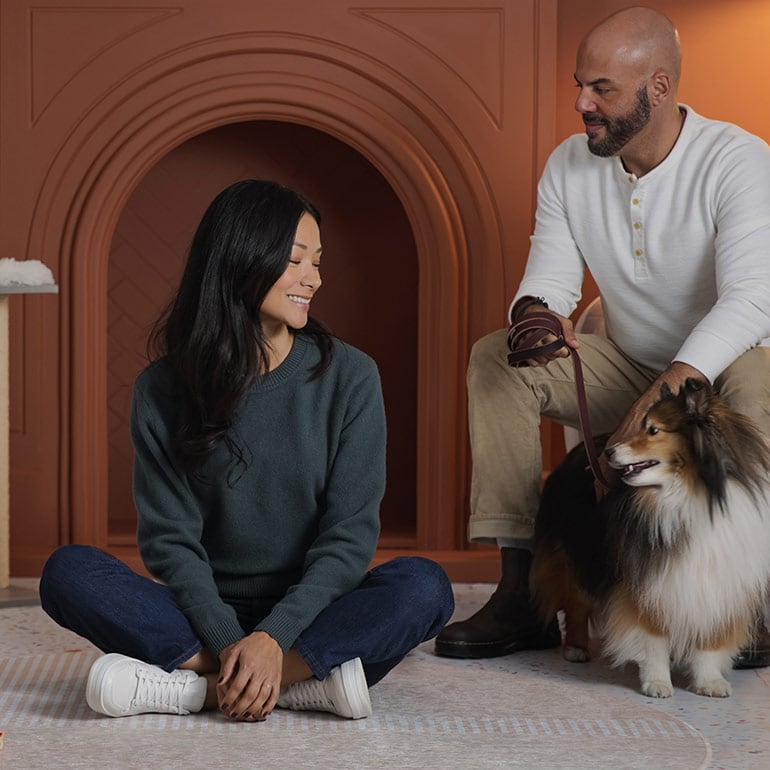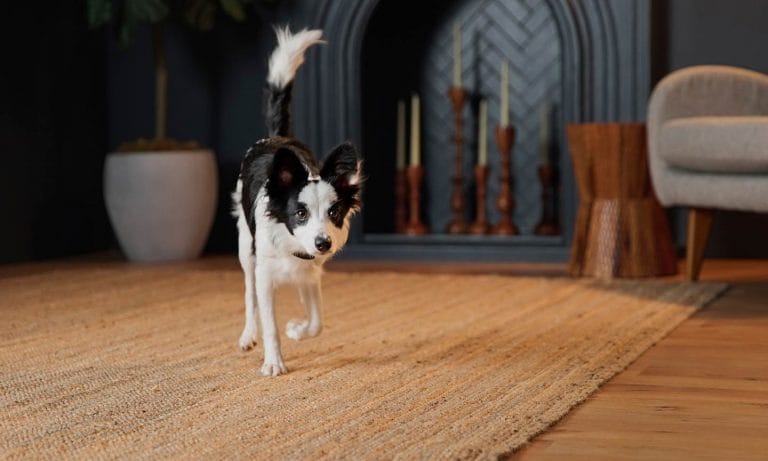Click the buttons below to jump to each section:
Are These Pets a Match?
Some dogs and cats get along easily. Others need a careful dog-cat introduction. And sadly, a small number of dogs and cats may never learn to get along. Before thinking about how to introduce a dog to a cat, it’s important to take an objective look at your cats and dogs to determine if introducing them is a good idea. Consider these factors:
- Breed: Some breeds of dogs are more likely to treat cats as prey; some breeds of cat are more sociable. Research your pets’ breeds (our dog breed guides are a great place to start) to find out how likely it is that your pets will get along—and how much training it’s likely to take to get them to coexist peacefully.
- Size: Cats are often more comfortable with small dogs. Larger dogs can more easily injure a cat. There are always exceptions, of course, but size is an important factor when it comes to safely introducing these furry friends.
- Socialization history: If your pet is super-friendly and interacts with other animals gently, they’re likely to behave similarly toward a new pet in your home. If your pet is fearful, or hasn’t been exposed to other animals before, a housemate of a different species may be scary to them, leading to aggressive behaviors. Find out more about socializing kittens and puppies.
- Past interactions: If your pet has had a scary or traumatic experience involving another species—say, if your dog has been scratched by a cat, or your cat has been chased by dogs—they may be fearful of your new pet.
- Energy level: A high-energy pet may not be the best fit for a home with a low-energy pet, and vice-versa.
Understanding Your Pets’ Body Language
Before allowing dog and cat interactions, familiarize yourself with canine and feline body language. Understanding your pets’ body language will help you spot signs of over-excitement or fear early, so you can step in with a distraction or separate the pets when necessary.
A few signs that your cat is feeling threatened:
- Crouching
- Arched back
- Tucked tail
- Ears flattened down
- Facing sideways (ready to escape)
- Hiding
- Hissing
A few signs that your dog is feeling threatened:
- Lip licking
- Looking away from the cat
- One paw raised
- Yawning
- Tucked tail
- Ears back (tight against head)
- Growling
IMPORTANT: If either of your pets is stiff and staring directly at the other, they may be about to attack.
Body language can also help you determine when your pets are comfortable enough to move on to the next step in the introduction process.
A few signs that your cat is feeling comfortable and relaxed:
- Steady, soft gaze
- Ears forward
- Tail raised and slightly curved at tip
- Relaxed whiskers
A few signs that your dog is feeling comfortable and relaxed:
- Tail down and relaxed
- Mouth slightly open, breathing slow (no panting)
- Soft eyes (lids relaxed)
- Loose muscles
Introducing Puppies and Kittens
Here’s one more safety tip to consider: When it comes to baby animals—introducing a kitten to a dog, introducing a puppy to cats, or introducing a kitten to a puppy—be extra careful. Baby animals don’t always think before they act. When both pets are babies, things can get out of hand fast. Make sure you supervise interactions and keep meetings short so nobody gets too excited!
What You’ll Need to Introduce a Dog to a Cat
Things you’ll need for your dog-cat introduction:
- Towels
- A pet gate
- Dog treats
- Cat treats
- Engaging dog toys, like a rope for tug of war
- Engaging cat toys, like a teaser wand
- A friend or family member to help—this is a two-person job!
How to Introduce a Dog to a Cat: A Step-by-Step Guide
1 Begin by Keeping Your Cat and Dog Separate
It might seem counterintuitive, but at the beginning of this process, keep your pets apart. Divide your home into a “cat area” and a “dog area,” so each pet has their own space. This will help them both establish a sense of security in your home, which will help get introductions off on the right foot.
A solid door should separate the two areas. Be careful when opening the door to avoid unexpected encounters. For extra safety, put a pet gate, such as the Regalo Extra Tall Walk-Through Gate, in the doorway or hall. That way, both door and pet gate would have to be open at the same time for either pet to get into the other’s space.
Give your pets a day or two to get used to their new space before moving on to the next step. (This is especially important for cats.)
2 Start a Scent Exchange
3 Play With the Door Closed
Now that the cat and dog are familiar with each other’s smells, it’s time to get them used to hearing each other. You’ll need an extra helper for the next few steps!
Have one person with the cat on one side of the closed door, and the other with the dog on the other side. Each person should do something fun with their pet. For example, you could do treat training with the dog, or play with a tug toy or a flirt pole such as the Outward Hound Tail Teaser. For the cat, try a Frisco Bird Teaser, or do treat training (if the cat likes treats). The idea is to get both pets enjoying themselves, while also hearing the other pet beyond the door. Keep the playtime session to no more than five minutes.
At first, each pet may be too distracted by the sound of the other pet to play or eat treats. Keep practicing once or twice a day—with the door closed and both pets having fun—until both pets stay completely focused on the game or the food the whole time.
4 Let Them See Each Other
Cover the pet gate with a towel, open the solid door and repeat step three, this time with the towel-covered pet gate as the barrier. Once your pets are comfortable with that, move the towel a little to the side so both pets get glimpses of each other as they train or play. As long as both the cat and dog continue to stay calm and focused on the fun, you can open the towel a half-inch further at the next practice session. Don’t rush, though! It may take weeks before both pets can stay calm with the towel gone.
If either pet reacts with fear or aggression when they see the other, end the session immediately. In the next session, set up the towel so they can’t see each other as clearly.
5 Remove the Barrier
Once the cat and dog happily play or get treats on either side of the uncovered pet gate, try doing the same routine with no gate between them. Use a leash to keep the dog from getting too close to the cat (imagine there’s a line separating the area into halves, and use that as a guideline). If the cat chooses to get close to the dog, though, that’s fine!
Just like before, the cat and the dog should each be playing or training with you or your helper. Make sure they can focus on what they’re doing, instead of the other pet. If your dog starts to get too interested in the cat, call your dog, ask for eye contact, or use your “leave it” cue. Move the dog with the leash if necessary.
Continue these sessions until your cat and dog remain reliably calm in each others’ presence.
FAQ's
Q:When Can I Leave My Pets Alone Together?
A:
When you can leave your pets alone together depends on the pets themselves. There is no standard timeframe for how long the introduction period should last. It could be days or weeks or even months. But if you go through the steps above and neither pet acts stressed or aggressive, you can start allowing them to spend time loose together. The dog should drag a leash at first, just in case. Also, put up cat shelves or cat trees so the cat can escape if the dog gets too pushy.
Every pair of pets is different, so there’s no definitive sign that your dog and cat are ready to spend time alone together. If you have any doubts about whether your pets are safe alone together, continue to separate them whenever you are not there to supervise—even if it means continuing to keep them in separate areas months, years, or even their whole lives. It’s an inconvenience, sure, but minor when you consider the possible alternative of one or both of your pets getting hurt.
Q:What If They’re Still Not Getting Along?
A:If your dog and cat aren’t adjusting, review what you’ve done. It’s important to take things very slowly when introducing cats to dogs. If you rush, you’ll get nowhere fast. Sometimes it’s worth trying the protocol again from the beginning, but even more slowly.
If your pets are still not getting along, consult a Certified Behavior Consultant-Canine or Certified Dog Behavior Consultant. These professionals can help you figure out if your pets need additional training, or are simply not a good fit.
Think You’re Ready to Introduce Cats and Dogs?
Test your knowledge with this true or false quiz that’ll make sure you understand the basics.
True or False?
When it comes to how to introduce cats and dogs, remember these key points:
- Always keep your pets’ safety in mind.
- Take things very slowly.
- Make sure both pets are completely calm before you move on to the next challenge.
Many cats and dogs can become good friends in time. The sooner you get started, the sooner they’ll be able to enjoy each other’s company. And if you find your dog and cat still can't get along, consider hiring a professional trainer or behavior consultant to help.
Like this story? Check out more of our favorite reads:
Share:
























